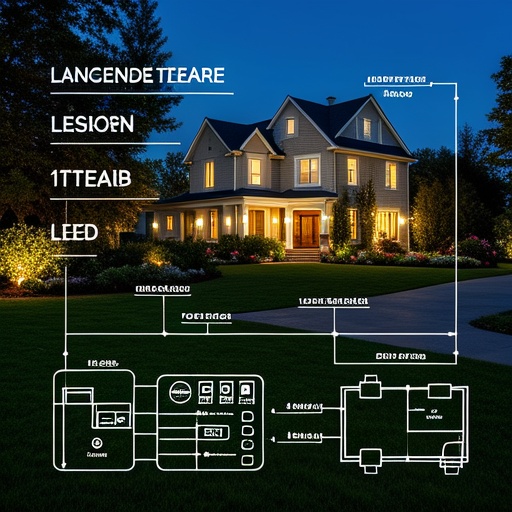Interpreting LandscapeLightPowerSupply, the "electricity language" of landscape lighting
Landscape lighting has the power to transform outdoor spaces, creating ambiance, enhancing safety, and highlighting architectural features after dark. At the heart of this transformation lies a complex yet fascinating system known as the landscape light power supply. Understanding this "electricity language" is crucial for designers, installers, and homeowners alike, as it dictates not only the functionality but also the aesthetics and sustainability of outdoor lighting schemes.
The Basics of Landscape Light Power Supply
At its core, a landscape lighting system comprises three main components: the power source, the distribution network, and the luminaires or light fixtures. The power source is typically an electrical supply from the mains, which needs to be converted and controlled to suit the low-voltage requirements of most landscape lights. This conversion is where the magic of interpretation begins.
Low-Voltage Systems: The Heart of Safety and Efficiency
Most landscape lighting systems operate on low voltage (12V or 24V), ensuring safety for both humans and wildlife. To achieve this, a transformer steps down the line voltage (usually 120V or 240V) to the desired level. Understanding transformer sizing is vital; it must match the total wattage of the connected lights to prevent overheating or underperformance. Here, the "electricity language" speaks of balance and precision.
Circuit Layout: Designing the Nervous System
The distribution network, often referred to as the circuit layout, is akin to the nervous system of the lighting installation. It involves running cables from the transformer to individual fixtures or groups of fixtures. Key considerations include cable type (e.g., direct burial vs. conduit), wire gauge to minimize voltage drop, and proper waterproofing to withstand outdoor elements. A well-designed circuit ensures even light distribution and reduces energy loss.

Decoding the "Electricity Language": Dimming and Control
Modern landscape lighting offers more than just on/off functionality. Dimming capabilities and smart controls allow for dynamic lighting scenes, adapting to different moods, events, or times of the night. This is achieved through advanced drivers and control systems that interpret digital signals, adding another layer to the "electricity language." Understanding how to integrate these technologies is essential for creating versatile and energy-efficient installations.
Energy Efficiency: Going Green with LED Technology
In recent years, LED technology has revolutionized landscape lighting, offering unprecedented energy efficiency and longevity. However, maximizing these benefits requires a deep understanding of LED specifics, including forward voltage, current ratings, and thermal management. Proper power supply design ensures that LEDs operate within their optimal parameters, reducing energy consumption and extending lifespan. Here, the "electricity language" translates into sustainable practices.
Safety First: Grounding and Protection
Safety is paramount in any electrical installation, especially outdoors. Proper grounding techniques and the inclusion of surge protection devices safeguard against electrical faults and lightning strikes. These protective measures are integral parts of the "electricity language," ensuring peace of mind and compliance with electrical codes.
Conclusion: Illuminating the Path Forward
Interpreting landscape light power supply goes beyond mere technicalities; it's about harnessing the power of electricity to craft experiences, enhance environments, and promote sustainability. By mastering this "electricity language," professionals can push the boundaries of creativity while adhering to safety standards and environmental responsibilities. As technology evolves, so too will the vocabulary of landscape lighting, promising even more exciting possibilities for outdoor illumination.
 In heritage architecture prote
In heritage architecture prote
 When small-batch customization
When small-batch customization
 Have the electromagnetic emiss
Have the electromagnetic emiss
 When Triac dimmable power supp
When Triac dimmable power supp
